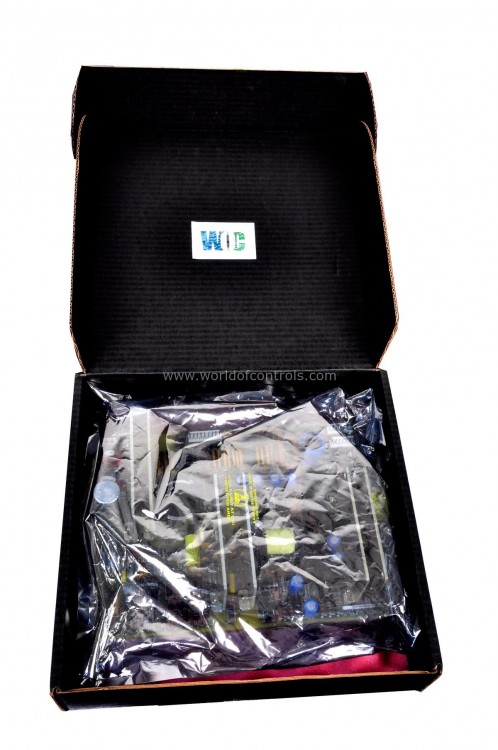
World Of Controls understands the criticality of your requirement and works towards reducing the lead time as much as possible.
DS200TQPAG1ADC - Turbine Control System Terminal Board is available in stock which ships the same day.
DS200TQPAG1ADC - Turbine Control System Terminal Board comes in UNUSED as well as REBUILT condition.
To avail our best deals for DS200TQPAG1ADC - Turbine Control System Terminal Board, contact us and we will get back to you within 24 hours.
SPECIFICATIONS:
Part Number: DS200TQPAG1ADC
Manufacturer: General Electric
Series: Mark V
Product Type: Turbine Control System Terminal Board
Number of channels: 12
Input span: 4-20 mA
Bandwidth: 40 Mbps
Addressing Range: 16 and 32-bits
Technology: Surface Mount
Common Mode Voltage Range: ±5 V
Maximum Lead Resistance: 15 Ohm
Analog output current: 0-20 mA
Operating temperature: -30 to 65 °C
Size: 8.26 cm high x 4.19 cm
Repair: 3-7 Day
Availability: In Stock
Country of Origin: United States
FUNCTIONAL DESCRIPTION:
DS200TQPAG1ADC is a Turbine Control System Terminal Board manufactured and designed by General Electric as part of the Mark V Series used in GE Speedtronic Turbine Control Systems. The terminal board serves as an interface for the electrical signals between the turbine’s sensors, actuators, and the control system. It provides a secure and organized point where input and output signals from the turbine's field devices (such as temperature, pressure, and vibration sensors) are brought together. The terminal board ensures these signals are appropriately routed to the relevant circuits and control logic, enabling the system to process real-time data and execute control commands for turbine regulation.
Signal Distribution:
These terminal boards are designed to distribute both analog and digital signals within the control system. Analog signals typically represent continuous measurements such as temperature or pressure, while digital signals carry binary data for system on/off status or fault detection. The terminal board ensures that all signals are properly isolated and routed to their designated destinations, minimizing the risk of cross-talk or signal interference.
Mounting and Integration:
Physically, the terminal board is mounted inside a turbine control cabinet or panel, typically near other control system components. It includes screw terminals, pluggable connectors, and wiring channels to facilitate secure and easy connections between the field wiring and the system. The terminal board is integrated into the system’s overall control architecture, ensuring that the electrical connections are stable, well-organized, and easy to access for both maintenance and troubleshooting.
Isolation and Protection:
The terminal board is often designed with built-in isolation features to prevent signal interference and protect the components from electrical surges, noise, or faults in the system. Isolation helps protect sensitive control circuits from high-voltage spikes or short circuits that might otherwise damage the system.
WOC has the largest stock of OEM Replacement Parts for GE Speedtronic Turbine Control Systems. We can also repair your faulty boards and supply unused and rebuilt boards backed up with a warranty. Our team of experts is available round the clock to support your OEM needs. Our team of experts at WOC is happy to assist you with any of your automation requirements. For pricing and availability on parts and repairs, kindly contact our team by phone or email.
What is the function of a Turbine Control System Terminal Board?
A Turbine Control System Terminal Board facilitates the routing of electrical signals between field devices (sensors, actuators) and the turbine control unit. It ensures proper signal processing, distribution, and isolation for safe and efficient turbine operations.
What materials are used in terminal board construction?
Terminal boards are typically constructed from high-grade, heat-resistant materials such as fiberglass-reinforced epoxy (FR-4) and feature corrosion-resistant connectors to endure harsh industrial environments.
Does the terminal board support remote monitoring?
Advanced terminal boards may include communication interfaces like Modbus, Ethernet, or PROFIBUS to enable remote monitoring and diagnostics.